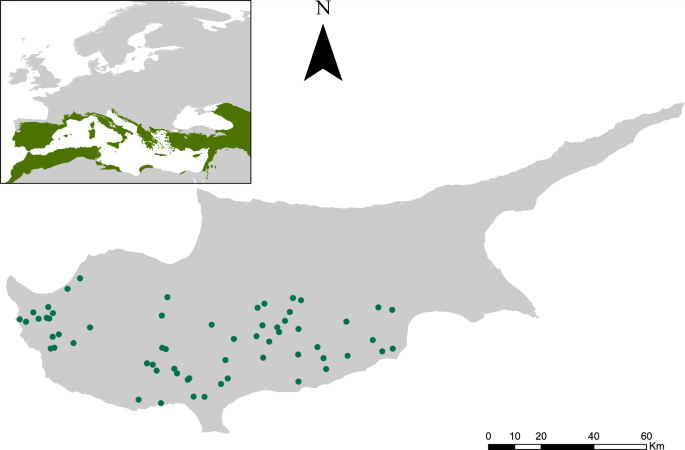Human activities are accelerating biodiversity loss1. National and international efforts are being made to address this global challenge. In December 2022, countries worldwide committed to the ambitious targets of the Kunming-Montreal Global Biodiversity Framework (GBF), aiming at halting and reversing biodiversity loss by 20302. A crucial component of the framework is the proper monitoring of progress, including the monitoring of biodiversity patterns3. To achieve this, it is essential to develop effective monitoring technologies capable of assessing biodiversity across large spatial and temporal scales3.
When considering vocalizing animals, such as birds, passive acoustic monitoring (PAM) methods have been proposed as a promising approach4. PAM methods involve collecting acoustic data using autonomous recording units, which can then be analyzed to extract ecologically meaningful information about the biodiversity in a specific area of interest5. Multiple techniques for analyzing acoustic data exist, primarily distinguished by whether the analysis aims to identify the species present or summarize the area’s acoustic environment (soundscape)6.
Species identification techniques usually involve the supervised training of a machine learning algorithm to recognize the acoustic patterns of specific species using a set of annotated acoustic samples. This approach is gaining popularity as algorithms become more accurate. Nowadays, off-the-shelf species identification algorithms are available7,8, reducing implementation barriers by requiring fewer programming skills. Furthermore, specialized platforms such as ARBIMON (https://arbimon.org/) allow users to train species identification algorithms through user-friendly interfaces needing no programming skills. However, species identification techniques have been shown to perform sub-optimally on certain occasions9, e.g., when monitoring entire animal communities with multiple overlapping vocalizing species or communities with numerous background noises, making focal signal detection difficult.
An alternative approach for analyzing ecoacoustic datasets has been using acoustic indices10, which are essentially mathematical formulae that summarize the acoustic environment of an area of interest11. The rationale behind this approach is that more biodiverse areas will have more complex and heterogeneous acoustic environments. Hence, by quantifying acoustic heterogeneity, we can make inferences about the biodiversity in an area of interest12. Over sixty such indices are currently available11, with several shown to correlate with species diversity10 and diversity of biological sounds11. However, recent research has highlighted that the indices’ performance is, in many cases, inconsistent13,14 and varies considerably across regions14,15 depending on the specific characteristics of the soundscapes in those areas6,16. For instance, it was shown that several of the indices tend to be less accurate in more biodiverse regions14, e.g., tropical environments, likely due to the higher number of species. Also, other studies have shown that non-focal sounds, such as those produced by human activities or non-biological processes (e.g., wind and rain), considerably affect the indices’ performance16,17. When working with small ecoacoustic datasets, it’s possible to manually process the data and remove or filter non-focal acoustic signals. However, this is not practical when dealing with large ecoacoustic datasets, which is often the case when monitoring biodiversity over large spatial and temporal scales. Recently, automated algorithms have been proposed for preprocessing audio files and cleaning up ecoacoustic datasets, such as datasets affected by rain18. However, this is still a field under development requiring more robust and comprehensive solutions.
The above challenges compromise the effectiveness of passive acoustic monitoring methods, underscoring the need for further development to support wider adoption and use by conservationists and other stakeholders. Accelerating such development could be facilitated by the availability of suitable datasets from biodiverse areas. In this article, we present a large ecoacoustic dataset (1.58 TB) collected at sixty-one sites on the island of Cyprus (Fig. 1), part of the Mediterranean Basin biodiversity hotspot19. The dataset, collected between March and May 2023, comprises 313,197 audio files, corresponding to over 5,200 recordings. It can be used for a range of applications, such as (a) developing or improving species recognition algorithms, (b) further testing and refining acoustic indices, and (c) developing new tools for removing signals produced by non-biological processes or by non-focal species. Additionally, as indicated by its inclusion in the Worldwide Soundscape project (https://ecosound-web.de/ecosound_web/collection/index/106), the dataset can be used to answer fundamental ecological questions20, e.g., by analyzing the acoustic patterns over time and space and relating them to other variables of interest widely available, such as land cover data21. The dataset was collected as part of the BIOMON project funded by the European Commission (https://cordis.europa.eu/project/id/101090273), aiming at exploring the effectiveness of acoustic indices in monitoring bird communities in biodiverse sites6,22.







